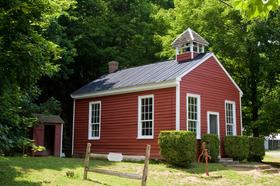For the 2025 school year, there is 1 public high school serving 238 students in the neighborhood of Shandin Hills, San Bernardino, CA.
The neighborhood of Shandin Hills, San Bernardino, CA public high schools have a diversity score of 0.52, which is less than the California public high school average of 0.63.
the neighborhood of Shandin Hills, San Bernardino, CA public high school have a Graduation Rate of 50%, which is less than the California average of 87%.
The school with highest graduation rate is Asa Charter, with <50% graduation rate. Read more about public school graduation rate statistics in California or national school graduation rate statistics.
Minority enrollment is 93% of the student body (majority Hispanic), which is more than the California public high school average of 79% (majority Hispanic).
Best ÎÛÎÛÂþ» High Schools in the neighborhood of Shandin Hills, San Bernardino, CA (2025)
School
(Math and Reading Proficiency)
(Math and Reading Proficiency)
Location
Grades
Students
Rank: #11.
Asa Charter
Charter School
(Math: ≤5% | Reading: 15-19%)
Rank:
Rank:
1/
Bottom 50%10
3512 North E St.
San Bernardino, CA 92405
(909) 475-3322
San Bernardino, CA 92405
(909) 475-3322
Grades: K-12
| 340 students
Frequently Asked Questions
What are the top ranked public high schools in the neighborhood of Shandin Hills, San Bernardino, CA?
The top ranked public high schools in the neighborhood of Shandin Hills, San Bernardino, CA include Asa Charter.
How many public high schools are located in the neighborhood of Shandin Hills, San Bernardino?
1 public high schools are located in the neighborhood of Shandin Hills, San Bernardino.
What is the racial composition of students in the neighborhood of Shandin Hills, San Bernardino?
the neighborhood of Shandin Hills, San Bernardino public high schools minority enrollment is 93% of the student body (majority Hispanic), which is more than the California public high schools average of 79% (majority Hispanic).
Recent Articles

Segregation in K-12 Education: Colonial Era
Explore the origins of educational segregation during the colonial era and the differential treatment of Native American, African American, and white students. This article delves into the historical context, policies, and societal attitudes that shaped early education in colonial America, highlighting the disparities and injustices that persisted within the schooling systems of that time.

2011 Classroom Size Update: Are Classes Still Growing Larger?
Since the recession, public school classrooms have seen major budget cuts - and many increases in class sizes. How is the situation in 2011? Read this article to find out.

Will Single Sex Classrooms Save ÎÛÎÛÂþ» Schools?
Learn about the benefits of single sex classrooms and why public schools are hoping this type of classroom will save the American school system.
